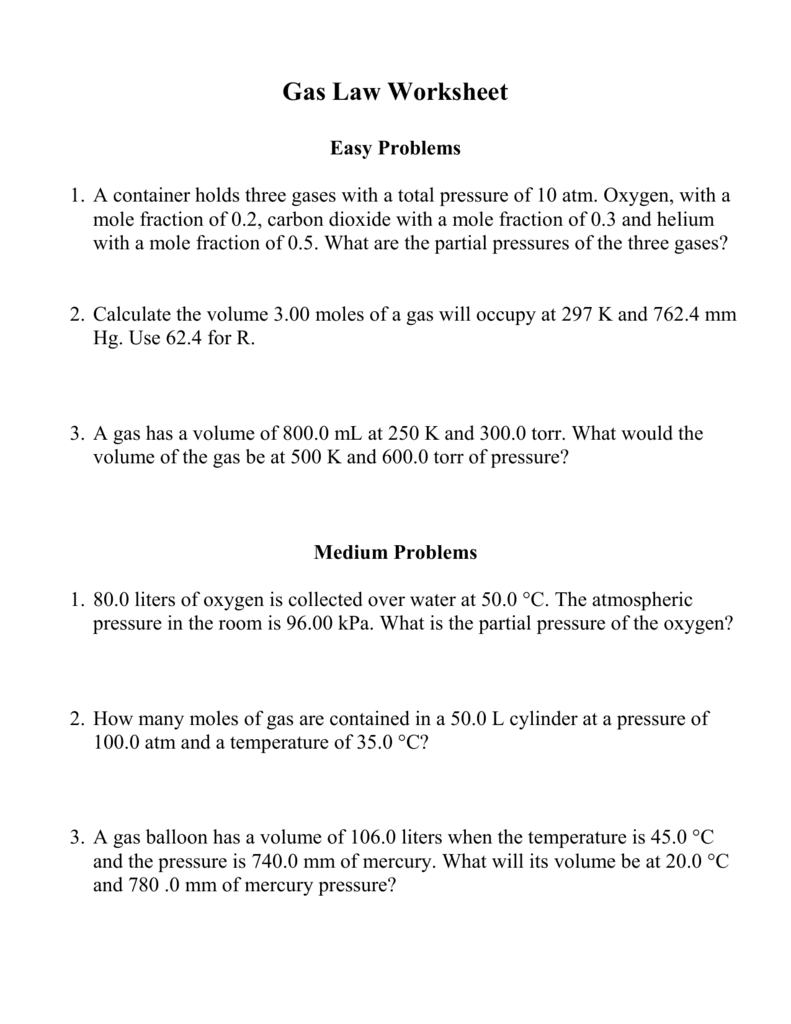

total pressure is 2 atm Flourine+.5 atm Hydrogen=2.5 atm total.
 P nitrogen=3.61 atm total-1.20 atm Oxygen=2.41 atm Nitrogen. P A/P tot=n A/N tot can be rearranged to P A=(P tot)(n A/N tot) to find the partial pressures.
P nitrogen=3.61 atm total-1.20 atm Oxygen=2.41 atm Nitrogen. P A/P tot=n A/N tot can be rearranged to P A=(P tot)(n A/N tot) to find the partial pressures. 
Use PV=nRT or P=(nRT)/V to find the total pressure.536 mol Oxygen+1.07 mol Nitrogen=1.61 moles total Find the number of moles of oxygen and nitrogen using PV=nRT which is n=PV/RT.10 mol total-6.7 mol Hydrogen=3.3 moles O gas.

67 mol Hydrogen/ 1 mol total= 6.7 moles H 2 gas The law of partial pressures also applies to the total number of moles if the other values are constant, soĤ mol Hydrogen+8 mol Oxygen+12 mol Helium+6 mol Nitrogen= 30 moles total
Subtract water vapor pressure from total pressure to get partial pressure of gas A: P A=1.03 atm- 1 atm= 0.03 atmĢ. Convert pressure to same units so 780 torr=1.03 atm. Each gas exerts its own pressure on the system, which can be added up to find the total pressure of the mixture of gases in a container. Since the gases in a mixture of gases are in one container, the Volume (V) and Temperature (T) for the different gases are the same as well. So it can be concluded that the pressure of a certain gas is based on the number of moles of that gas and the volume and temperature of the system. A gas will expand to fill the container it is in without affecting the pressure of another gas. The pressure of an ideal gas is determined by its collisions with the container, not collisions with molecules of other substances since there are no other collisions. In other words, the different molecules in a mixture of gases are so far apart that they act independently they do not react with each other. \( \newcommand\)īased on the kinetic theory of gases, a gas will diffuse in a container to fill up the space it is in and does not have any forces of attraction between the molecules.








 0 kommentar(er)
0 kommentar(er)
